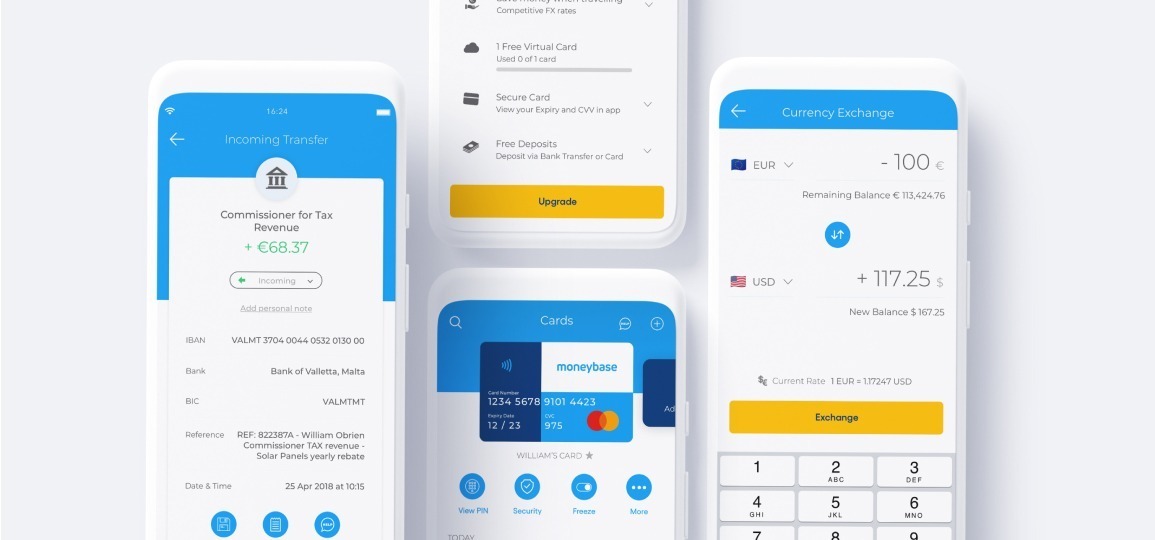Looking to diversify your investments, hedge your risk or gain exposure to a particular industry or market? Similar to mutual funds but with the ability to trade just like stocks, ETFs have become an increasingly important investment tool. Providing easy access to international markets, as well as commodities such as gold, silver and other precious metals, ETFs can help diversify your portfolio without needing much time and effort to manage and allocate your investments.
Below are further details about ETFs, how they work and why you should consider adding them to your portfolio.
What is an ETF and how does it work?
Investments that aim to track the performance of a specific index such as the FTSE 100, ETFs are funds that issue shares which are traded on a stock exchange. They can also track a commodity, an asset class market sector or basket of assets.
What’s so appealing about ETFs is that they cover a broad range of asset classes and can give you exposure to specific markets, sectors or investment strategies, which makes them a good investment if you are looking to gain exposure in a pool of investments without having to buy each and every one of them individually.
ETFs are bought and sold just like a stock when the stock exchanges are open and just like a stock, ETFs too have ticker symbols, while their intraday price data can be easily found throughout the course of the trading day. Yet, unlike company stocks, the number of an ETF's outstanding shares can change daily since the creation and redemption of these shares is continuous and this is what keeps ETFs’ market price in line with their underlying securities.

What are the advantages of investing in ETFs?
Offering full visibility of the securities held, the price you are paying for units, as well as how the ETF is performing, there are several other benefits to investing in ETFs.
- Easy to trade – since ETFs are traded on stock exchanges, you can easily buy and sell them at any time provided that the market is open.
- Diversification – ETFs give you access to several investment options, covering a broad range of asset classes, sectors and geographies and this can greatly help you spread your risk.
- Cost-effectiveness – with low expense ratios and fewer brokerage commissions, ETFs are a cost-effective way of investing.
- A choice of trading transactions – since ETFs are traded like stocks, investors can place a variety of order types, such as limit orders or stop-loss orders.
- Transparency – with many ETFs being index-based and required to publish their holdings daily, you will know exactly what you own.
- Dividend payments – just like stocks, ETFs too may also distribute dividends.
What are the disadvantages of investing in ETFS?
Despite the benefits, ETFs do have drawbacks. For one, there are several different types of ETFs even amongst those that track the same index so you must make sure that you fully understand what those are. Other disadvantages include:
- Tracking differences - the gap between performance and the returns from an index is known as the tracking difference. It is important to remember that ETFs will not follow an index perfectly even after charges are taken into account, so there could be some discrepancies. At times, this tracking difference can work to an investor’s favour, however, it can also work against them.
- Foreign exchange risk – exchange rate movements can affect the value of your investments, while exchange rate fluctuations may affect the capital performance and income generated from these ETFs when converted to your preferred currency.

What are the different types of ETFs?
Whether you are looking to generate income or partly offset risk, there are many ETFs that can help you achieve your financial objectives. Below are some of the most popular types:
Market ETFs: these track a particular index such as the S&P 500 or Nasdaq. A good example is the SPDR S&P 500 (SPY) which is one of the most widely known ETFs that tracks this index.
Bond ETFs: these offer exposure to various types of bonds, be it government bonds, treasury bills, corporate bonds, international bonds, high-yield bonds, municipal bonds and more. The iShares Convertible Bond (ICVT) is one example of a bond ETF.
Sector ETFs: these ETFs track a particular industry such as healthcare, technology and energy. At times, they may even track a sub-sector within these industries. Ideal for those looking to invest in an entire industry, two examples are the Energy Select Sector SPDR ETF (XLE) and the DRIV ETF (DRIV), which invests in companies that develop autonomous vehicle technology, electric cars and EV components and materials.
Commodities ETFs: these invest in commodities like oil, gold, natural gas and others, like the iShares Commodities Select Strategy ETF (COMT). It is important to note that when investing in these ETFs the investor does not purchase the commodity as such, but buys a contract that mirrors its price.
Currency ETFs: these invest in foreign currencies like the Euro or the Canadian dollar. Some large currency ETFs include Invesco Currencyshares Euro Currency Trust (FXE) and the Invesco CurrencyShares Australian Dollar Trust (FXA).
Some last pointers
Actively-Managed ETFs
Whereas some ETFs can be passively-managed, in other words, they replicate a particular index or benchmark without seeking to outperform it, others are actively-managed, which means that a portfolio manager will be involved in the buying and selling process of shares, as well as changing the holdings within the fund.
Performance expectations
Often linked to a benchmarking index, ETFs are designed not to outperform that index. Nevertheless, the value of investments can fall and rise so keep that in mind.
Particularly appealing to those looking to capitalise on specific areas of opportunities, ETFs can be used as building blocks for any investment strategy, while offering a wealth of benefits.
With Moneybase Invest you can trade over 20,000 instruments including stocks, bonds, ETFs and funds in over 40 international markets, while you can also invest in fractional ETFs. Buying ETFs only takes a few minutes. Once you have downloaded Moneybase Invest from the App or Play Store, have onboarded successfully and deposited some funds, just select the ETF you would like to invest in and hit buy. Alternatively, visit https://live.cctrader.com/ and repeat the same process.
Not sure what ETFs to invest in? Thanks to our brand-new discovery section you can explore trending ETFs, those that are popularly held and so much more.
Looking for some ideas? Offering a strong and stable cash flow to your portfolio with juicy dividend growth, the DGRO ETF (DGRO) is highly diversified as it tracks a basket of US stocks. On the other hand, investors looking to make a play on the broad lithium space but don’t want to invest in any specific stock can do so by investing in the LIT ETF (LIT).
Moneybase Invest is brought to you by Calamatta Cuschieri Investment Services Ltd and is licensed to conduct investment services business by the MFSA under the Investment Services Act.
Moneybase Invest offers direct market access and speed of execution and is intended for knowledgeable and experienced individuals taking their own investment decisions. The value of investments may go up and down and currency fluctuations may also affect investment performance.
The contents of this article are not intended to be taken as a personal recommendation to invest but strictly based on research and for information purposes only. Retail investors should contact their financial adviser for a suitability assessment prior to taking any investment decisions.





